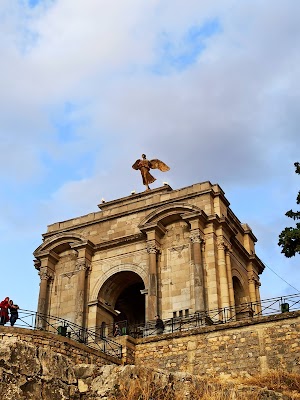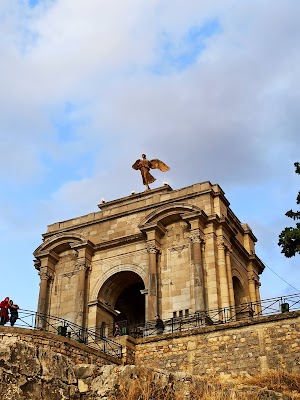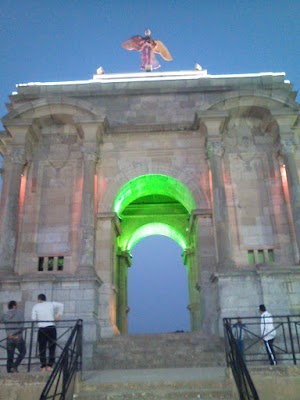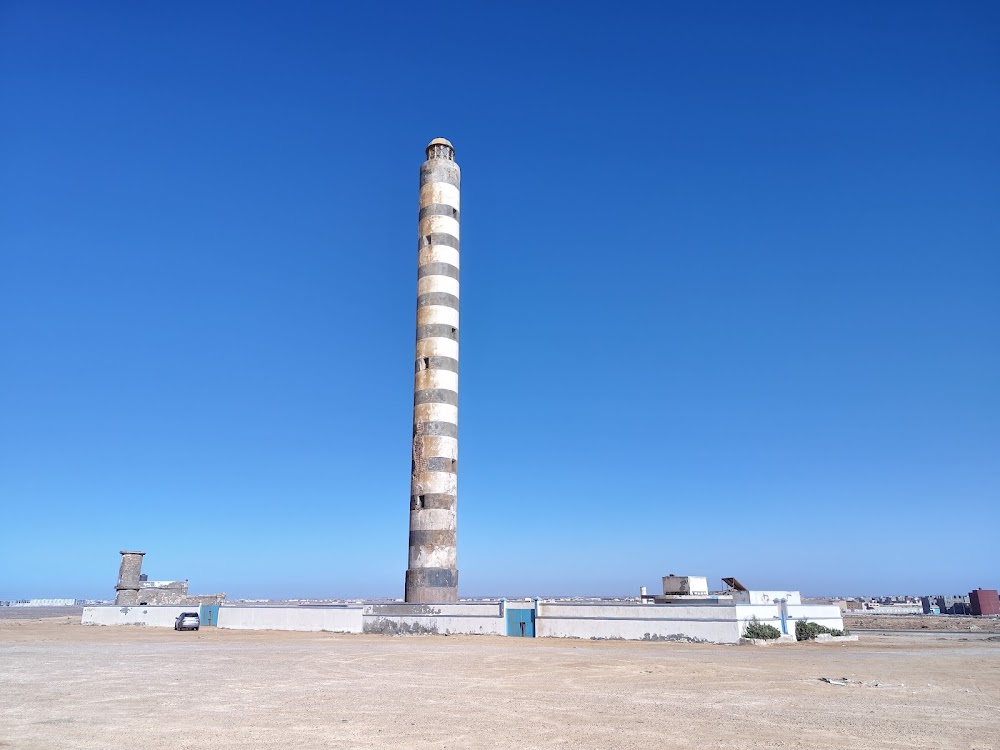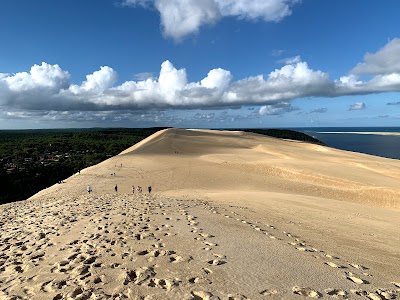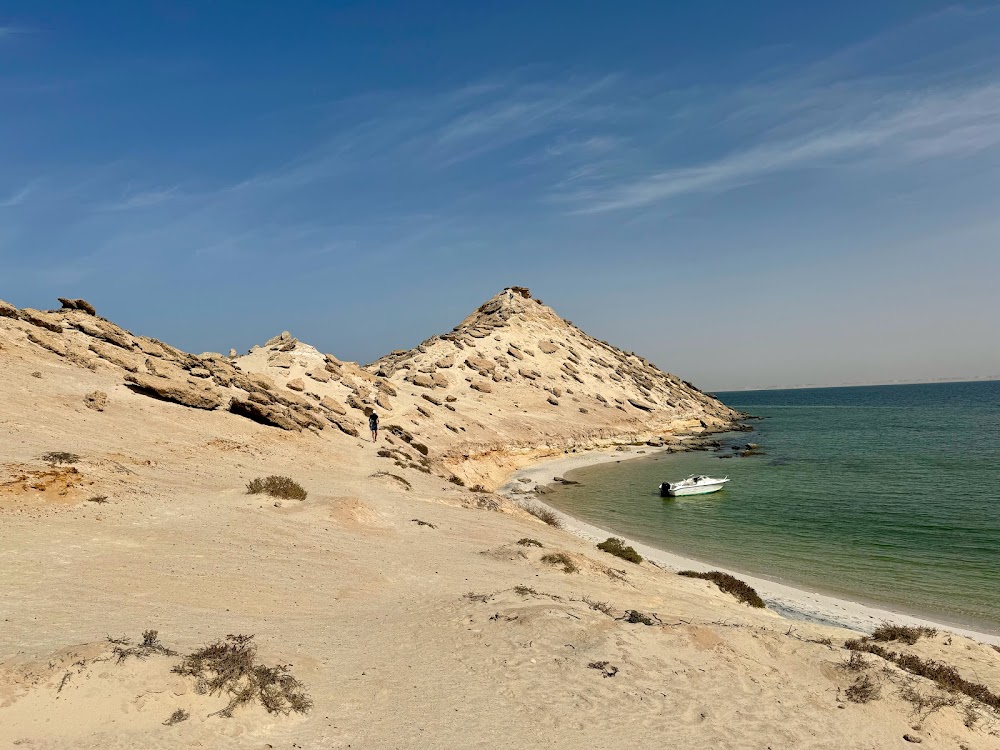Monument aux Morts (Monument aux Morts)
Overview
Located in the enchanting region of Dakhla-Oued Ed-Dahab in Morocco, the Monument aux Morts stands as a poignant tribute to those who have fallen in battles that have shaped the history of this region. This captivating blend of historical, cultural, and artistic significance offers visitors a reflective space to appreciate the sacrifices made by previous generations.
The Monument aux Morts, often referred to as a war memorial, commemorates the lives lost during various conflicts that have touched this part of Morocco. Erected to honor both soldiers and civilians who perished, the monument serves as a powerful reminder of the past, inviting visitors to contemplate the costs of conflict and the enduring value of peace.
One of the most striking features of the Monument aux Morts is its architectural design. The structure seamlessly integrates local Moroccan design elements with traditional forms, creating a unique aesthetic that reflects the region's rich cultural heritage. Elaborate carvings and inscriptions adorn the monument, each telling a story of bravery, sacrifice, and national pride. Visitors often find themselves mesmerized by the intricate details and craftsmanship that went into its construction.
The location of the monument is equally noteworthy. Nestled in a serene and strategically significant area, it provides a tranquil environment for visitors to pay their respects. The backdrop of the vast desert and azure skies creates a stunning contrast, symbolizing hope and resilience amidst adversity. The monument is easily accessible and well-maintained, ensuring that all who visit can fully engage with its historical and emotional resonance.
At the heart of the Monument aux Morts lies its historical significance. It chronicles the various militaristic events and campaigns that have impacted Dakhla-Oued Ed-Dahab, encompassing both local and global conflicts. Each plaque and inscription serves as a historical record, personalizing the sacrifices of those who served. For history enthusiasts and casual tourists alike, the monument offers a rich tapestry of narratives that deepens understanding and appreciation of the region's past.
In addition to its historical importance, the Monument aux Morts has become a cultural landmark. It acts as a focal point for public ceremonies, especially on national holidays and memorial days. These events attract both locals and tourists, providing a unique opportunity to witness and participate in local traditions and observances. During these ceremonies, a profound sense of collective reverence and community spirit fills the air, creating particularly moving experiences for visitors.
The monument is not merely a site of mourning but also a place of learning. Educational tours and guided visits are often organized, offering in-depth information about the history and significance of the monument and the conflicts it commemorates. These tours provide valuable insights that enhance visitors' appreciation of the monument and the broader historical context of Dakhla-Oued Ed-Dahab. Tour guides are usually well-versed in multiple languages, ensuring accessibility for a diverse range of international tourists.
Moreover, the area surrounding the Monument aux Morts is rich with other attractions. Visitors can explore nearby markets, indulge in local cuisine, or venture into the natural beauty of the desert landscape. This makes a visit to the monument part of a broader cultural and sensory experience, immersing tourists in the life and heritage of the region.
While at the monument, one cannot help but notice the personal tributes left by visitors. Flowers, letters, and small tokens often adorn the base, left by those who come to pay their respects and connect with the past. These personal touches add a layer of poignancy to the experience, reminding visitors of the ongoing impact of war and the universal desire for peace.
For those planning to visit, it is recommended to allocate sufficient time to fully explore the monument and its surroundings. The best times to visit are in the early morning or late afternoon when the lighting enhances the dramatic features of the monument and the heat of the day is more manageable. Comfortable walking shoes and a camera are also advisable, as there are ample opportunities to capture the beauty and solemnity of the site.
In conclusion, the Monument aux Morts in Dakhla-Oued Ed-Dahab is more than just a memorial; it is a profound testament to the resilience and unity of a community shaped by its history. Offering a deeply moving experience, the monument resonates with visitors long after they leave. Whether you are a history buff, a cultural enthusiast, or simply a traveler seeking meaningful experiences, this monument provides a window into the soul of Morocco and its enduring spirit. Be sure to include it in your travel itinerary for an unforgettable visit.


